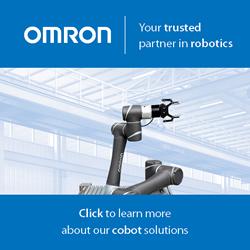The impact of AI and robotics on employment goes far deeper than just job creation. AI, and subsequently, robotics, are niche technologies that demand an extensive understanding of every associated parameter.
 Top Article for 2018 - How Artificial Intelligence and Robotics Can Create More Employment Opportunities
Top Article for 2018 - How Artificial Intelligence and Robotics Can Create More Employment Opportunities

Mayank K
The impact of artificial intelligence and robotics on employment opportunities have always been a topic of much speculation. When it comes to organising and manipulating data, processing complex mathematical problems, and executing tasks in the blink of an eye, AI and robotics are the most preferred choice. As a result, AI has penetrated almost every industry, from construction, transport, and manufacturing to business intelligence, education, and healthcare. It is, therefore, not surprising that many silicon valley figures, including Facebook CEO Mark Zuckerberg, believe that not only can artificial intelligence support and enhance existing jobs, but it can also create new roles.
A report generated by Gartner suggests that by 2020, AI would generate an estimated 2.3 million jobs. This figure was calculated by taking into account the 1.8 million jobs made simpler by automation. However, like any other technology, when it comes to domain skills, AI and robotics also require dedicated training courses. This has spurred the need for artificial intelligence courses, thus preparing professionals for a new wave of change brought about by innovations in robotics and artificial intelligence.
Need of new jobs roles:
The AI and robotics sector never fails to impress people with innovations. Tasks that used to be considered extremely complex until previously have now been rendered simple, thus giving professionals a broader space to focus on other tasks. In addition to this, the proliferation of AI techniques has yet another benefit; as the number of AI and robotics devices increase, so will the need for job roles to support and maintain their functioning.
As a result, there will be a demand for professionals who understand robotics and AI at every stage of the development cycle. This amounts to at least a two-thirds increase in the current job scenario. In a recent study conducted by Capgemini, nearly 80 percent of the 1,000 organisations who implement artificial intelligence have stated that they would be hiring AI and robotics professionals for new job roles.
Need for trained professionals:
The impact of AI and robotics on employment goes far deeper than just job creation. AI, and subsequently, robotics, are niche technologies that demand an extensive understanding of every associated parameter. Consequently, there is a massive demand for performing microtasks like data analyses and virtual imaging, which require a significant level of expertise. This means that there is an ever-growing market for professionals who can perform these tasks, as evident by the rapid popularity of artificial intelligence courses.
According to industry estimates, the year 2017 faced significant labour shortages in the technology sector. So much so that for 500,00 open developer positions in the U.S alone, there were less than 50,000 computer graduates to satisfy the demand. A survey conducted by Salesforce Research stated that 52 percent of IT recruiters faced a significant skill gap in their organisations. Judging by these trends, in the current era of business improvement that is dominated by AI and robotics, there would be even more demand for skilled professionals. Hence, this is as good a time as any to invest in artificial intelligence courses to fill in the ever-increasing demand for skilled professionals.
Innovative job roles:
In a study conducted by Michael Page on professionals about the impact of AI and robotics in their industry, the majority of survey takers were looking forward to AI generating more innovative and exciting job roles. Interestingly, these professionals were not just limited to the IT industry but were working in the fields of manufacturing, marketing, finance, sales, and accounting. Advances in AI and robotics will enable machines to efficiently and quickly perform more mundane and time-consuming tasks, thus allowing professionals to take up more innovative job roles. Examples of these innovations are already available in the form of driverless cars and automated healthcare assistants, both as a result of advancements in AI and robotics. Propelled by these innovations, industries would hire more highly skilled people to invent, develop, and maintain allied and complementary products.
Training, research, and development:
As with every other technology, AI and robotics will flourish only through innovation. When assessed from a macroscopic viewpoint, the industry is still at a fledgeling stage, and much is yet to be discovered and implemented. This brings to focus the next layer of employment opportunities in AI and robotics, that of research, development, and skill enhancement. Some positions are already in demand by some of the leading tech companies for roles of AI trainers, data scientists and architects, statistical modelling, machine learning, computational intelligence, psychology, mathematics, neuroscience, and linguistics.
As robotics advances to more and more areas of human intelligence and tasks, research and development to better perfect robotic models are very much in demand. Firms who are investing in AI and robotics are always on the lookout for experienced professionals in their R&D department who can perform research and drive innovations in their existing prototypes.
In a nutshell:
The future of most industries is dominated by optimisation of robotics and AI. Workplaces will become more efficient, and the way enterprises conduct their businesses is undoubtedly expected to change for the better. It is, therefore, as perfect a time as any for AI and robotics professionals to anticipate how these technologies will impact more employment opportunities. As opposed to the fear of machines taking over jobs, AI and robotics are instead poised to create new and more exciting job role, thus significantly improving the employment prospects of people in not just IT, but in almost every industry.
The content & opinions in this article are the author’s and do not necessarily represent the views of RoboticsTomorrow
Comments (3)
Featured Product

